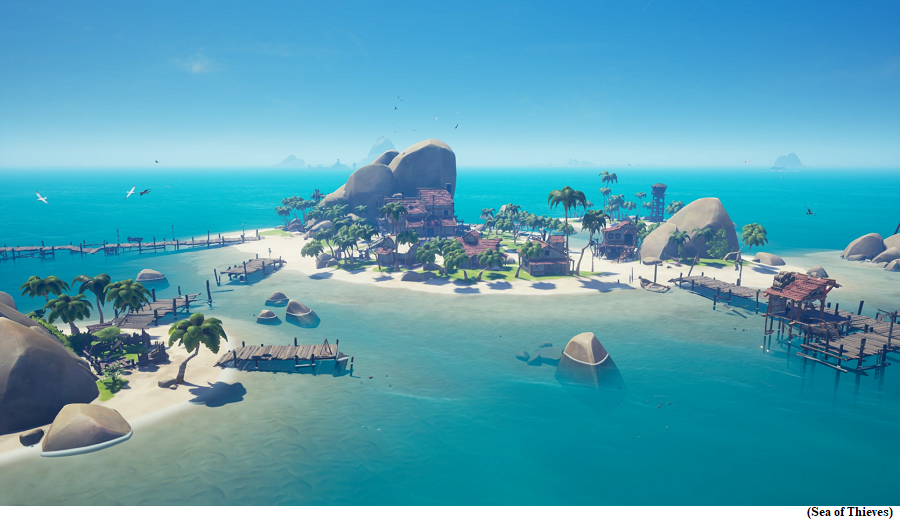An Outpost in the Sea (GS Paper 2, International Relation)

Context:
- India is fortunate to own strategically-located island territories in the Bay of Bengal as well as the Arabian Sea.
- The Andaman and Nicobar (A&N) group of 572 islands, closer to South East Asia than to peninsular India, forms a springboard from where India can project power, exert influence, or strike friendships in its eastern neighbourhood.
- They could also be objects of desire for any country that wants to dominate the Bay of Bengal.
China’s engagement:
- Since 2013, China has engaged in an intense campaign of building artificial islands in the South China Sea. Using a huge fleet of dredgers, it has created over 3,000-4,000 acres of new land atop reefs and rocks.
- Three such maritime outposts; Fiery Cross, Mischief and Subi Reefs have been provided with runways and harbours as well as guided-missile batteries.
China’s island strategy has two objectives:
- By developing a capability to monitor all traffic that moves under or above the sea termed “maritime domain awareness”, a nation can extend its defensive perimeter well beyond the homeland.
- By providing island outposts with surveillance facilities and fortifying them, a nation can project power over a huge oceanic expanse.
Indian efforts:
- On October 1, 2001, India took a giant leap of faith by placing all Armed Forces located in the A&N Islands, including the Coast Guard, under the unitary command of a newly created Commander-in-Chief, A&N (CINCAN) to be nominated, in rotation, from the three services.
- Apart from ensuring defence of the territory, waters, airspace and the exclusive economic zone of the islands, the ANC was charged with safeguarding the eastern approaches to the Indian Ocean and establishing an air defence identification zone (ADIZ) over the islands.
- By the turn of the century, all South East Asian neighbours were becoming wary of China and expected that India would assert regional influence by positioning substantial forces with trans-national capabilities in the A&N.
- Significantly, soon after the establishment of ANC, then Premier Hu Jintao had warned his countrymen about the “Malacca Dilemma” that China could face.
Lack of interest:
- India considered that any overt show of force by India in the Bay of Bengal would be seen by neighbours as “muscle-flexing” and was, hence, undesirable.
- Thus, despite frequent pleas by successive CINCANs, the tri-service force levels remained ridiculously small and inadequate for ocean surveillance or establishment of an ADIZ. Regrettably, the services too, individually and collectively failed to lend support and reinforce the fledgling ANC.
- Apart from the operational roles assigned, ANC was also the “crucible” for testing the feasibility of implementing “jointness” in India’s military milieu. Once staff, logistics and operational procedures were evolved, the ANC template could, thereafter, be replicated elsewhere.
- In its 22-year-long existence, the ANC has provided live proof that units of India’s three armed forces can march, sail, fly and fight “jointly” and seamlessly, under a single commander.
- Regrettably, not only has the ANC model and framework not been replicated anywhere else, the latest theatre command model under consideration recommends the abolition of ANC and its absorption by the Eastern Naval Command.
Scope of ANC:
- The 1999 Kargil episode, the 2004 tsunami and successive military face-offs with China culminating in the 2020 Galwan clash, offer stark reminders that crisis situations can develop in the blink of an eye. Hence, preparedness is crucially important, especially for a remote island entity.
- To guard against future surprises, the ANC needs to be suitably fortified and its force levels and firepower urgently augmented.
To this end, the command must be invested with capabilities for:
- Maintaining comprehensive, three-dimensional maritime domain awareness;
- defending the archipelago against military intrusions;
- tracking and interdicting hostile ships/submarines; and
- launching a rapid reaction force, when required, via airlift or sealift.
Geostrategic significance:
- From a larger geostrategic perspective, the ANC can contribute to Indo-Pacific security given China’s display of increasing belligerence in the Himalayas as well in the Pacific.
- PLA Navy (PLAN) warships, submarines and intelligence-gathering vessels have become frequent visitors to our waters.
- As the PLAN grows in numbers and capability, and when an aircraft carrier becomes available, we may well see a permanent Chinese naval presence in the Indian Ocean, to safeguard its shipping and other strategic interests.
Alternatives for power-balancing:
- Since the Indian Navy cannot contemplate matching the PLAN “force-on-force”, it must adopt alternatives for power-balancing, via existing partnerships like the Quad and Malabar, which have the US, Japan, and Australia as other members.
- Whenever the (recently postponed) Quad summit takes place, the four leaders must accost the bull by the horns and take some hard decisions about checkmating China’s unrelenting belligerence in the region.
- Even without becoming a military alliance, the Quad would gain in stature and credibility if it sheds its political coyness and crafts an agenda and charter for itself.
India’s role:
- India could play a key role in infusing dynamism into the Quad/Malabar construct by offering Port Blair in the Andamans as the location for a shore-based secretariat and “watering hole” for member navies.
- Having attained an adequate level of “inter-operability”, it is also time for the four Quad navies to graduate from multinational “exercises” to multinational “operations”.
- The domain of “non-traditional threats” provides enough scope for Quad navies to undertake benign and utilitarian operations.
- By honing their skills in areas like disaster relief, humanitarian assistance, medical aid, submarine and aircraft rescue and maritime security operations, the Quad will send out a dual message of comfort and reassurance to smaller Indo-Pacific nations, and of dissuasion to potential hegemons.
Way Forward:
- For the ANC to become India’s maritime bastion in the Bay of Bengal and to play a significant role in the ongoing Indo-Pacific “Great Game”, it must be adequately bolstered and retained as an independent joint command.


